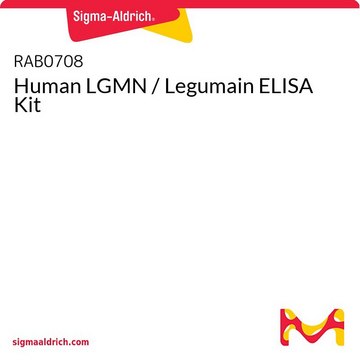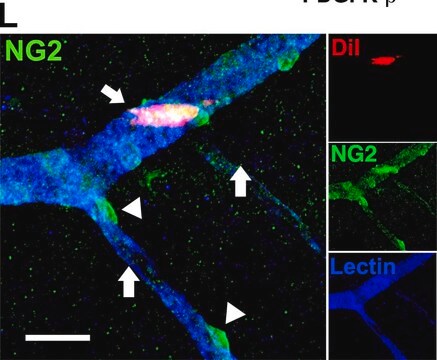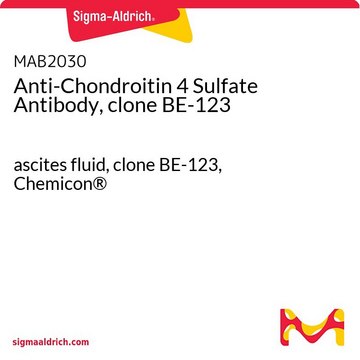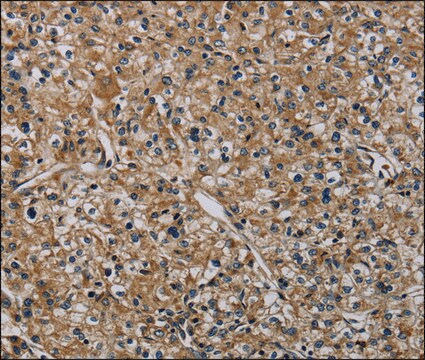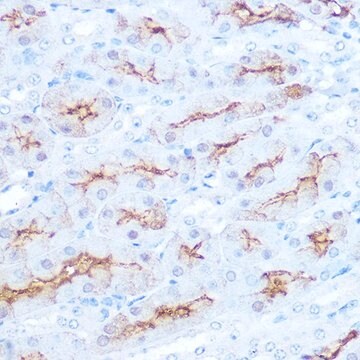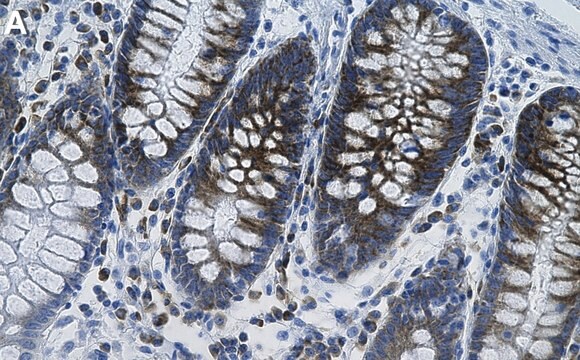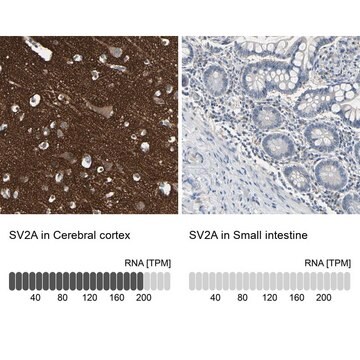ABN2270
Anti-phospho AEP (Ser226)
from rabbit
Sinônimo(s):
Legumain, Asparaginyl endopeptidase, Protease cysteine 1, Delta Secretase
About This Item
Produtos recomendados
fonte biológica
rabbit
forma do anticorpo
affinity isolated antibody
tipo de produto de anticorpo
primary antibodies
clone
polyclonal
reatividade de espécies
human
embalagem
antibody small pack of 25 μg
técnica(s)
activity assay: suitable
immunofluorescence: suitable
western blot: suitable
Isotipo
IgG
nº de adesão NCBI
nº de adesão UniProt
modificação pós-traducional do alvo
phosphorylation (pSer226)
Descrição geral
Especificidade
Imunogênio
Aplicação
Neuroscience
Immunofluorescence Analysis: A representative lot detected phospho AEP (Ser226) in Immunofluorescence applications (Wang, Z.H., et. al. (2017). Mol Cell. 67(5):812-825).
Kinase Assay: A representative lot detected phospho AEP (Ser226) in HEK293 cells treated with SRPK2 and in vitro kinase assays (Wang, Z.H., et. al. (2017). Mol Cell. 67(5):812-825).
Qualidade
Western Blotting Analysis: A 1:500 dilution of this antibody detected phospho AEP (Ser226) in lysates from HEK293 cells co-transfected mammalian GST-tagged (mGST) AEP and wild-type (WT) SRPK2, but not in cells co-transfected with knockdown (KD) SRPK2.
Descrição-alvo
forma física
Armazenamento e estabilidade
Outras notas
Exoneração de responsabilidade
Não está encontrando o produto certo?
Experimente o nosso Ferramenta de seleção de produtos.
Certificados de análise (COA)
Busque Certificados de análise (COA) digitando o Número do Lote do produto. Os números de lote e remessa podem ser encontrados no rótulo de um produto após a palavra “Lot” ou “Batch”.
Já possui este produto?
Encontre a documentação dos produtos que você adquiriu recentemente na biblioteca de documentos.
Nossa equipe de cientistas tem experiência em todas as áreas de pesquisa, incluindo Life Sciences, ciência de materiais, síntese química, cromatografia, química analítica e muitas outras.
Entre em contato com a assistência técnica